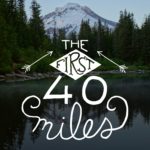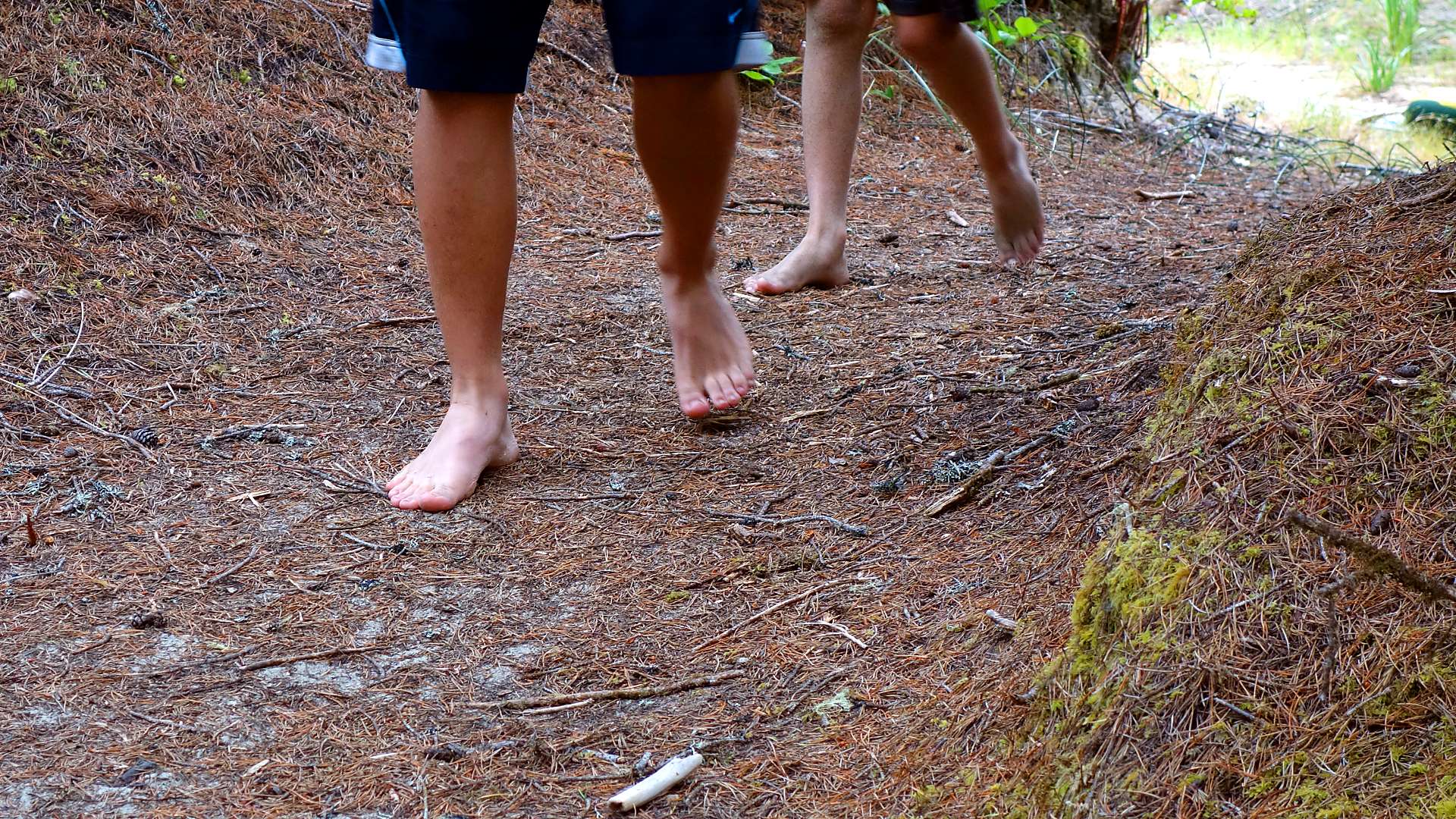Podcast: Download (Duration: 31:28 — 29.7MB)
Show Notes: Episode 144 Backpacking Barefoot
Today on the First 40 Miles, one of the best feelings after a long day of hiking is that moment when you unlace your boots and toss them next to your pack. But have you ever thought about ditching your boots altogether? We’ll share some benefits of lightening up and going more minimalist with your footwear—maybe even barefoot. Then we’ll review a pair of shoes from Vibram that will practically gift wrap your feet in Japanese wrapping cloth. Next, we’ll help you crack the code on how to find long, winding trails.
Opening
- What is barefoot hiking? What’s the appeal?? Why even? Who does this?? How does one prepare for hiking without shoes–or with minimal shoes?
- Barefoot can mean no shoes or minimal shoes
- Concerned about injury, disease, modern uncalloused feet, cold
- LNT benefits—from barefoot.org “Hiking barefoot causes virtually no trail erosion as a bare foot makes much less of an imprint than a booted foot–offering an environmentally sound choice for hiking.” from barefoot.org
- Wholebody Barefoot by Katy Bowman
- Shoes for barefoot hiking or running: Merrell Vapor 2, Xero Shoes, Vibram Five Fingers or the Furoshikis, Vivobarefoot, Aquasox
- http://www.barefooters.org/barefoot-hiking-2/
- “Feet were made for walking…That’s what they do. If they’re not used to walking on certain surfaces, they will soon adapt with practice.”
- Tips for those interested in doing some barefoot hiking: http://www.unshod.org/ebbfhike/bfhik101.htm
Top 5 Benefits of Going Barefoot or Wearing Barefoot Shoes
It’s a full earth experience
- If dirty doesn’t matter, then it’s fun to feel earth beneath your feet, even if just for part of the trail…
- How many textures are on the trail?? Moss, dirt, mud, grass, sand, streams, even gravel or snow patches
- It’s a luxury we rarely afford ourselves—however it’s a luxury that we have to earn.
- Some prep is required if you want to walk barefoot: spend time outside of shoes, spend time on rough, uneven surfaces, toughen up your feet a little each day or even for short stretches on the trail.
Barefoot hiking is a full-body experience
- From the top of your head to the tips of your toes–every muscle and joint in between will be responding to information received from the feet.
- Your eyes will be watching to good places to step, your brain will be processing information from the feet, and the rest of your body will be rolling, pitching and yawing to ensure that you stay upright and balanced.
- Because you’re getting more information from the ground, your balance, stability and posture should improve
Less weight
- Every pound on your feet is like five pound on your back—that’s science!
- Going barefoot or wearing barefoot shoes have features that allow your feet to move
- When your feet move, you get loads of information from them
- Shoes should be flexible, thin, and fully attached to your foot
- A hard stand on flip flops
Rejuvinating
- There’s something magical that happens when we connect more directly with nature—and it’s rejuvenating and exhilarating
- There are even studies that claim that walking directly on the earth’s surface does something electrical to us…They call it “earthing” or “grounding”
- https://www.ncbi.nlm.nih.gov/pubmed/22291721
- Doesn’t really matter what it’s called—there are some sensations that are just made for the feet to experience. Warm sand, squishy mud, the feel of moss under your feet, stepping on a pile of matted pine needles. This is stuff that you’d never experience if you kept your socks and shoes on 24/7.
Barefoot hiking can strengthen your feet
- No heel lift may reduce injuries and allows the calf muscles and Achilles tendon to stretch and lengthen
- Helps you to develop a more natural gait, which strengthens foot muscles, ligaments and tendons
- Trail running: Let the ball of the foot be a shock absorber; instead of a heel strike that acts like a brake
At worst, barefoot hiking could give you some tender soles, and maybe some cuts, punctures or bruising—maybe even parasites, but probably not. However, if you look at the benefits, it’s a fairly low risk way to intensify your trail time and have a completely unique and enriching experience as you connect directly with the earth’s surface.
SUMMIT Gear Review™: Vibram Furoshiki Wrap Shoes
Structure
- Inspiration from Japanese tradition of wrapping, carrying and holding objects in cloth.
- Vibram soles
- Thin stretchy material which has ribing on it to give some structure and design
- Tabs wrap across each side of the foot and attach with Velcro
- No laces
- Low density Vibram outsole for weight reduction.
Utility
- Foot is completely covered—no place for rocks and grit to get in
- Great water shoes
Mass
- 9 ounces
Maintenance
- Hand wash, air dry
Investment
- $110
Trial
- Fit a wide variety of foot sizes, however make sure that the pair you order is long enough
- Comfortable if you’re used to going barefoot
- Very flexible sole
- Look weird to most people, but I think most backpackers are pretty much over the looking weird thing. The have a fun, bright, unique look.
Backpack Hack of the Week™: Long Distance Trails in the United States
- If you’re looking for a nice long trail to wander along, Wikipedia has a page called “Long Distance Trails in the United States”
- Sorted by state
- https://en.wikipedia.org/wiki/Long-distance_trails_in_the_United_States
Trail Wisdom
“And forget not that the Earth delights to feel your bare feet and the winds long to play with your hair.” —Kahlil Gibran

